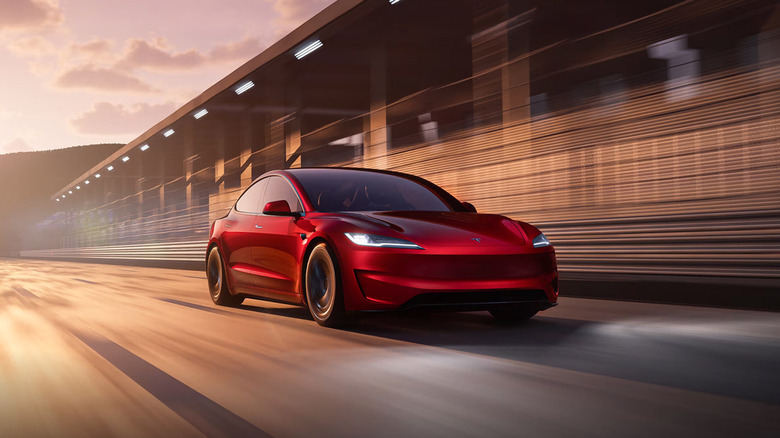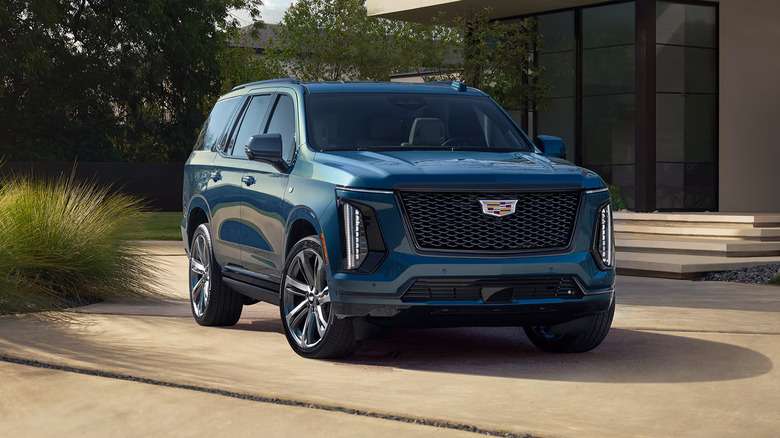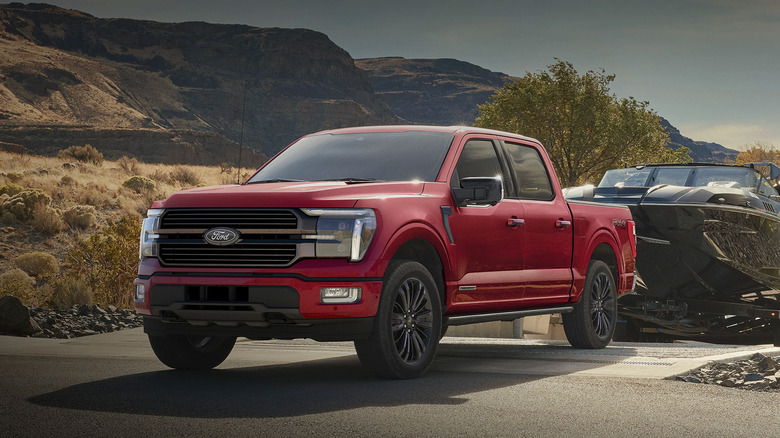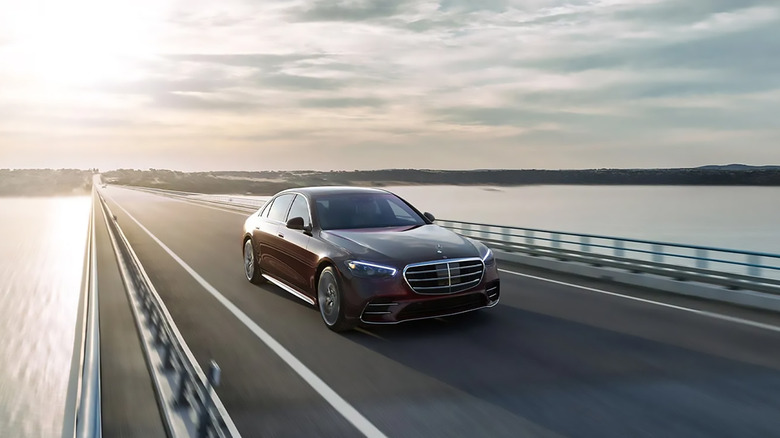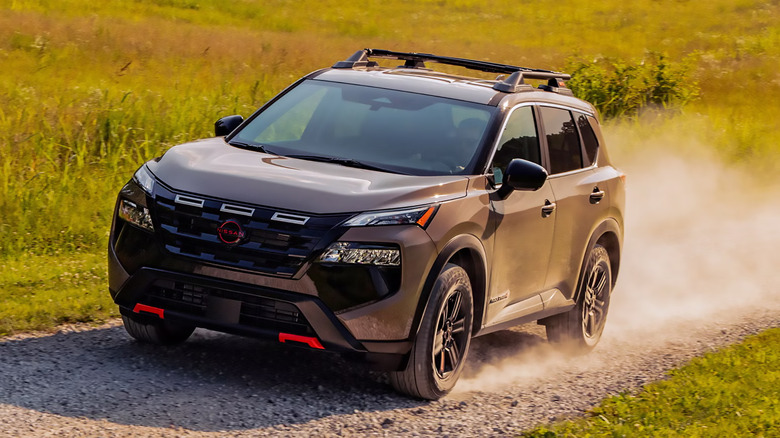5 Cars That Are The Closest Thing To A Self-Driving Car You Can Buy Today
While manufacturers are have been working to get us closer to making the concept of a driverless car a reality for decades, in 2025, we're still not there entirely. However, more and more of the boxes that cars need to tick to earn a fully autonomous title are being checked off each year.
Many countries, including the U.S., use the SAE automation levels to determine how "self-driving" a vehicle really is. The levels range from 0-5, with the lowest rating representing no assistance whatsoever. Level 1 vehicles have limited assistance, still requiring you to be fully in control with your hands on the wheel. Level 2 systems allow you to take your hands off the wheel sometimes, but you still need to be ready to take over, and level 3 systems mark the point at which you can sometimes turn your attention away from the road. The two highest ratings, level 4 and level 5, are where full autonomy comes into play, but no cars available on the U.S. market currently offer anything that qualifies.
For many enthusiasts, the idea of not needing to have your hands on the wheel takes the joy out of driving, but plenty of others will likely fantasize about the convenience it brings. With fully automated cars still seemingly pretty far away, and most hands-free systems falling into the level 2 and level 3 categories, these models represent the closest to self-driving yet, streamlining the more monotonous times behind the wheel, particularly on the highway.
2025 Cadillac Escalade
The Cadillac Escalade has always delivered top-notch interior fit and finishes, but in today's market, that's not enough to set itself apart from the ever-growing list of rivals.
The car received a much-welcomed refresh for 2025, seeing tweaks to its exterior styling and upgrades to its cabin technology options. And in addition to its new features, the 2025 model retains GM's industry-leading Super Cruise hands-free driving technology. Super Cruise is being one of the most advanced systems in the developing self-driving category. Working in tandem with the adaptive cruise control, it takes over braking and accelerating, with LiDAR map data and a vast array of sensors ensuring hands-free lane changing is as safe as possible, which isn't something many hands-free systems can do. However, only certain roads are compatible, and you'll also need to go through a series of checks to enable the system.
Cadillac emphasizes that the driver should always be fully in control despite Super Cruise's capabilities, meaning there are still plenty of steps that need to be implemented before the anyone could realy call the system "self-driving." It must be noted that an OnStar subscription is needed for Super Cruise, to enable the necessary connectivity to external services.
2025 Tesla Model 3
In addition to redefining the electric car market, Tesla has turned much of its focus to adding new safety technology to its cars. Features such as automatic emergency braking, lane departure avoidance, and forward collision avoidance come as standard with the refreshed Tesla Model 3, and all of them are powered by the Autopilot safety system.
Alongside the more traditional safety features that Autopilot offers for Tesla's cars in 2025, it's no surprise to see Tesla remain one of the leaders in pushing the assisted driving scene forward. It's not quite as advanced as GM's Super Cruise, but it can still streamline highway driving by assisting with steering, braking, and accelerating. Being fully in control of your Tesla is vital when using Autopilot, however, as it's listed as a hands-on system. But the standard Autopilot isn't the only assisted driving package that Tesla offers.
For an extra $8,000 on top of the $42,490 starting price for the 2025 Model 3 (without the $1,390 destination charge and $7,500 federal tax credit), you can opt for the Full Self-Driving (supervised) package, which is designed to handle the majority of tasks you have behind the wheel, on highways and in urban environments. Again, Tesla reiterates the importance of being fully able to regain control of the car, but makes the Model 3 one of the closest examples of a fully self-driving car in 2025.
2025 Ford F-150
Ford is essentially the embodiment of everyday practicality in a vehicle, whether that's with a compact crossover like the Escape or a full-size pickup like the best-selling F-150. Ford offers two different variants of the leading truck: the standard combustion-powered model and the electric F-150 Lighting. Aside from the underpinnings, the two trucks have slightly different appearances inside and out, with the latter having a unique front fascia and better tech in the cabin. However, both models come with Ford's flagship technology that keeps them well in the fight in the hands-free scene.
Functioning similarly to GM's Super Cruise, the Ford BlueCruise takes over tasks like steering, braking, and accelerating on specified highways, which we found useful in our review of the latest F-150, but the system also now offers lane changing with the latest 1.5 update. Ford calls the available stretches of highway "blue zones," which, while not as expansive as GM's capability at 130,000 miles nationwide, still covers a solid amount of ground.
Using the adaptive cruise control prompts the use of BlueCruise, much like with Super Cruise, the system's Lane Change Assist will constantly maintain the safest position for your vehicle on the road, keeping you in the best lane depending on the traffic both up front and behind. As do other hands-free driving assistance features, Ford's BlueCruise requires a subscription to use. You can either pay a yearly fee of $495 or spend $2,495 to always have the system available.
2025 Mercedes-Benz S-Class
Moving away from American manufacturers, Mercedes-Benz competes in the segment differently from most. The German manufacturer's hands-free tech is a step ahead of the competition, and though it isn't as readily available in the U.S. as we'd like, it brings us closer to completely self-driving cars than almost any other system on the market.
The S-Class has long been the pinnacle of opulence for the Mercedes-Benz brand, and with its firm stance on electrification (although not as firm as it once was), the EQS leads the charge for the EVs. This is one of the only cars to offer a level 3 autonomous driving system, in the form of Drive Pilot.
Equipped with LiDAR and a vast array of ultrasound sensors, Mercedes-Benz's Drive Pilot is one of the very few conditionally automated systems, meaning you can take your eyes of the road and let the S-Class or EQS make its own decisions based on your surroundings. You'll have to be ready to take control of the car when necessary, however, and only drivers in California and Nevada can enjoy the technology in the United States. You also can't go above 40 mph on the approved highways.
2025 Nissan Rogue
Nissan's hands-free driving assist may not be as advanced as what Mercedes-Benz or even GM have put together, but it has still brought the Asian manufacturer well into the mix of viable options in the American market. Nissan ProPilot acts similarly to the previously covered American systems, allowing the brand's affordable SUVs such as the 2025 Rogue to offer an experience much closer to the luxury scene than its price tag suggests.
The latest 2025 Nissan Rogue starts at a solid $28,590 (along with a $1,395 destination charge), making it one of the most affordable models in the Japanese automaker's lineup. However, increasing the price slightly to $29,590 for the SV trim unlocks the ProPilot system. You'll also subsequently get the technology as standard with the two higher trims.
Unsurprisingly, Nissan's ProPilot can only be used on designated highways, controlling the vehicle's braking, accelerating, and steering to keep you at a safe distance from the cars around you, also staying well within your lane. The system also remains at a set speed to prevent any sudden braking. Once again, it's vital to be able to take control of the wheel at all times, as tasks such as guaranteed crash avoidance are beyond ProPilot's current capabilities.
